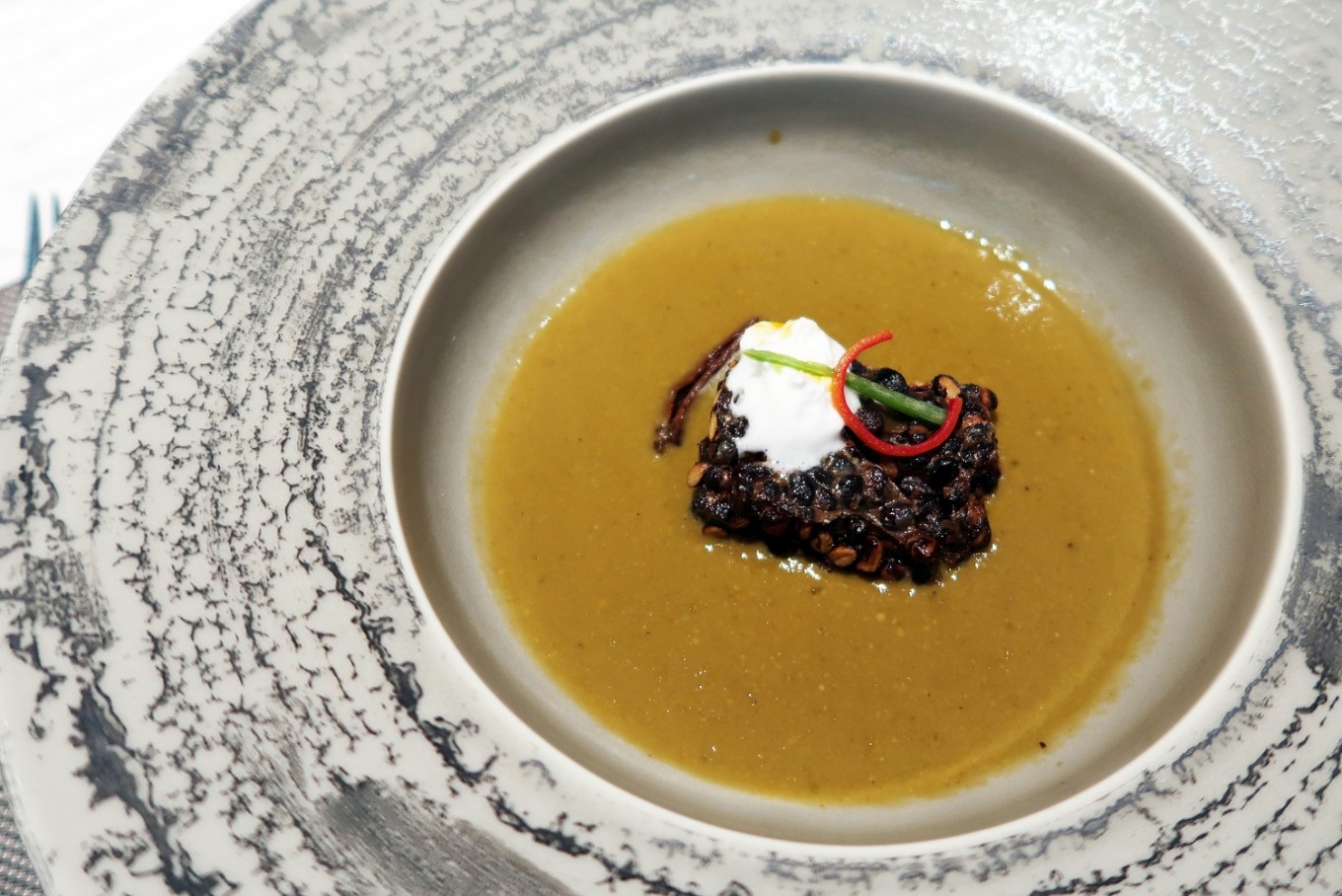Popular Reads
Top Results
Can't find what you're looking for?
View all search resultsPopular Reads
Top Results
Can't find what you're looking for?
View all search resultsGourmet dinner seeks to showcase hidden power of tempeh
Amid its popularity, only a few people realize that tempeh can be more than just comfort food.
Change text size
Gift Premium Articles
to Anyone
T
empeh, without a doubt, is one of the most popular foods in Indonesia. High in protein, the affordable superfood is a staple of the Indonesian diet and is available in a variety of dishes, such as the all-time favorite deep-fried tempeh, tempe orek (tempeh cooked with sweet soy sauce), tempe bacem (tempeh cooked with coconut sugar) and orem-orem (Malang-style tempeh dish served in coconut milk).
Amid its popularity, few people realize that tempeh can be more than just comfort food.
Indonesian fine dining restaurant 1945 at the Fairmont Jakarta Hotel is set to show food enthusiasts the hidden power of tempeh on Nov. 20.
Featuring the restaurant’s chef de cuisine Adhitia Julisiandi, executive chef of Nusa Indonesian Gastronomy restaurant Ragil Imam Wibowo and executive chef of TWG Tea Salon and Boutique Philip Walasary, the “Six Hands Dinner” features tempeh variations, such as tempeh from Malang, corn tempeh, black soya tempeh and more.
“Although it’s originally made from soybean, tempeh is actually a fermentation technique,” Ragil told The Jakarta Post after a media preview last week, explaining that tempeh was not limited to fermented soybeans and it could be made from various ingredients.
Adhitia added that tempeh’s popularity had increased and the ingredient had huge potential.
During the review, the Post had the opportunity to sample the eight-course menu and was greatly impressed with lodeh tempe kulat pelawan, lobster lapinadar and brem cake.
The lodeh tempe kulat pelawan featured a house-made black soy tempeh cooked in coconut milk. Unlike the usual tempeh available at traditional markets, this tempeh had a strong texture and matched well with the thick gravy.
Read also: Wida Winarno: tempeh warrior
Ragil, the man behind the dish, said he purposely did not clean the soybean skins to get the texture as he wanted people to get the half-cooked taste.
He also said black soybeans lent a stronger umami flavor to the dish. “This is one of the reasons why black soybeans are used to make kecap (soy sauce),” he added.
The lobster lapinadar dish incorporated corn tempeh. Made by Adhitia, the corn tempeh came in a sweeter flavor than soybean tempeh, making it suitable for the mild texture of lobster meat.
Lastly, brem cake closed the media lunch on a high note. Combining Balinese chocolate infused with TWG Tea Poetic Star tea, tempe sponge, tape (fermented cassava) and caramelized tempe crumble, the dessert delivered a western-style presentation with a strong local flavor.
Philip said the tempe sponge was made from tempeh powder. Shockingly, it did not leave a hint of tempeh and it blended well with the other ingredients.
Ragil said the entire menu proved that tempeh could be cooked for both savory and sweet dishes.
He hoped the dinner would make people appreciate tempeh even more.
“[Cooking] tempeh is a matter of technique. It can be made out of various ingredients and cooked into a variety of dishes,” said Ragil. (wng)











